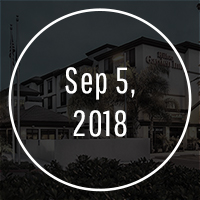S.D. Is Already Game For Soccer in Town
By LOU HIRSH
San Diego — Investors pushing to bring Major League Soccer to San Diego have not yet made the sale.
Details on a proposed $200 million Mission Valley stadium, with adjacent commercial and civic amenities, have yet to be approved by the city and potentially San Diego State University.
Local business observers, however, say that the arrival of a pro soccer team — in addition to healing civic pride after the departure of the San Diego Chargers — could be a logical economic extension of what is already a growing local economy geared to the game of soccer.
Those include training businesses, league-play facilities, suppliers, retailers and other businesses geared to what has long been among the world’s most popular sports — though less so on the pro level in the U.S. At a recent downtown rally and media event organized by the local investor group, MLS Commissioner Don Garber said the San Diego region boasts a young, enthusiastic demographic of soccer fans that the league has been looking to attract for the past several years.
For the region, there would likely be bottom-line benefits in the form of hotel room bookings and related local spending by visitors during the course of MLS seasons — spanning 17 regular-season home games from March to October — along with other events that would be held in the proposed new soccer and college football stadium the rest of the year.
Three years after Juan Carlos Paz y Puente and his five business partners started The Futbol Factory in Chula Vista, its three indoor practice fields now serve nearly 1,200 enrolled students — ages 4 and up, including children, teens and adults — learning the basics of soccer.
Paz y Puente is a former drummer and music producer who grew up in Mexico City, which has four pro soccer teams.
He anticipates that the presence of Major League Soccer in San Diego will serve to further galvanize a region that is already fond of the sport.
“It will help to make soccer more a part of the common culture locally,” said Paz y Puente, pointing to what happened in the city of Tijuana when the Xolos started playing in the Mexican pro league in 2007, after the city went decades without a team. The Xolos’ fan loyalty — which now crosses fervently into San Diego County when the team plays here — was sealed after Club Tijuana won a championship in 2012.
Provided the details can be worked out, experts are projecting numerous potential economic and civic benefits if San Diego is victorious among the 10 cities currently vying for four expansion slots being made available by the MLS.
Among current indicators is the activity already being generated throughout the region by youth and adult amateur league play.
Hotelier and industry consultant Robert Rauch, CEO of San Diego’s RAR Hospitality Inc., said his Hilton-branded hotels in Carmel Valley regularly fill up with visitors to soccer league events including the twice-annual Surf Cup, held at sites including the San Diego Polo Fields in Del Mar.
Those tournaments attract some of the best high school talent in the western U.S. and are frequently visited by college scouts from around the nation. Rauch estimates that youth and adult soccer leagues — along with numerous other nonpro leagues geared to softball and basketball — generate 6,000 to 8,000 room nights at his hotels annually.
As for bottom-line impacts of the MLS on the San Diego region, Rauch said he would need more data but would guess roughly that pro soccer games played in Mission Valley could generate about $3 million per game in spending on hotels and related expenses like restaurant meals and retail store visits.
That assumes, he noted, that about 5,000 people within a total crowd of 25,000 in Mission Valley would be from out of town. Each of those attendees would generate two hotel-room nights, for a total of about $1 million in hotel spending and $2 million in ancillary spending.
Given that an MLS regular season includes 17 home games out of a 34-game season that could mean about $51 million in direct local spending by those visitors annually. The proposed new stadium could generate more spending the rest of the year, through college football and other events.
“I’m very bullish on the MLS and soccer in general,” Rauch said of the potential impact for the local hotel industry.
He said he would like to see the city review multiple development and venue proposals for Mission Valley before deciding specifically on the plan put forward by the current investor group.
“It can’t hurt to see what else is out there,” Rauch said. “You don’t just have to take the first proposal that comes to you.”







